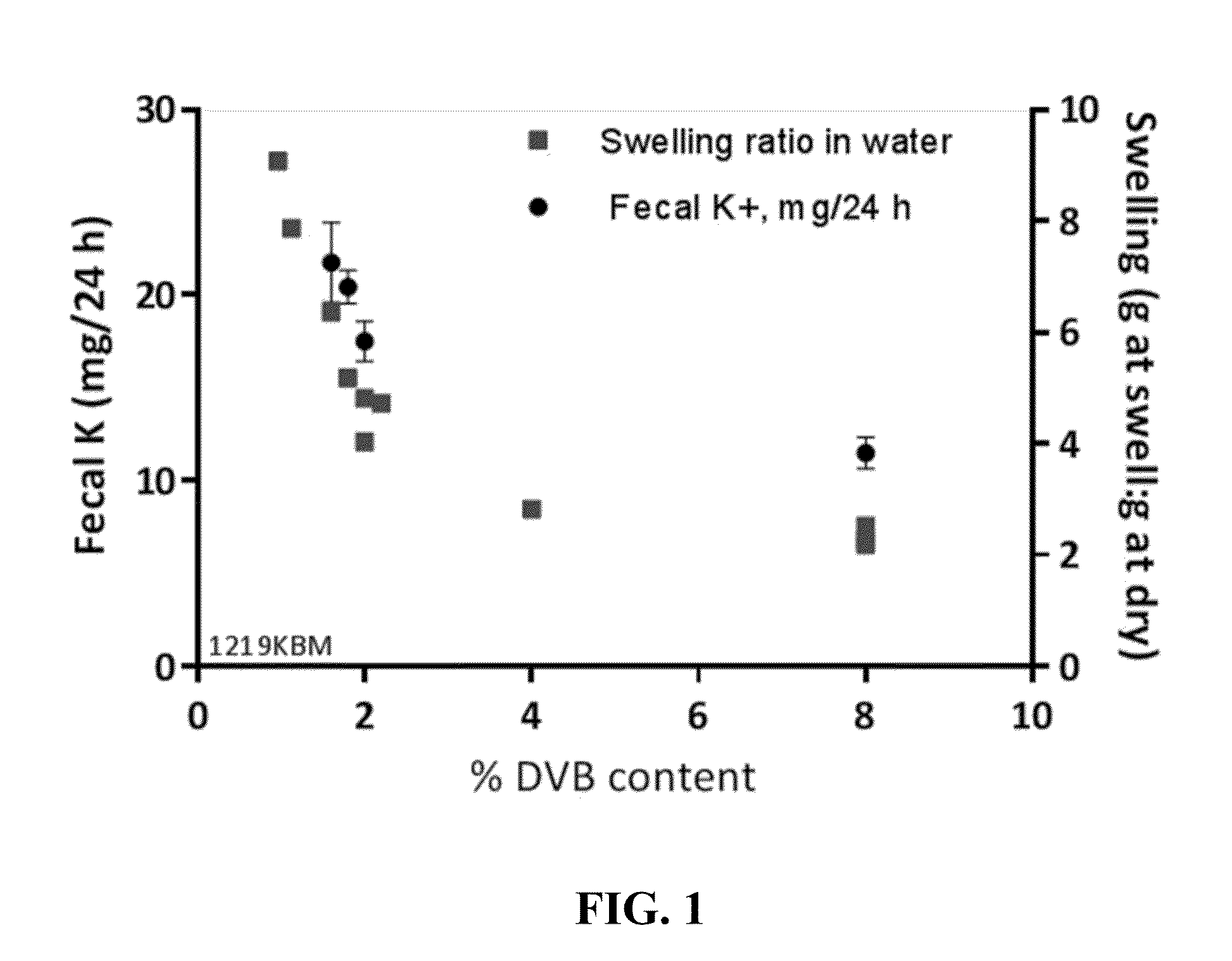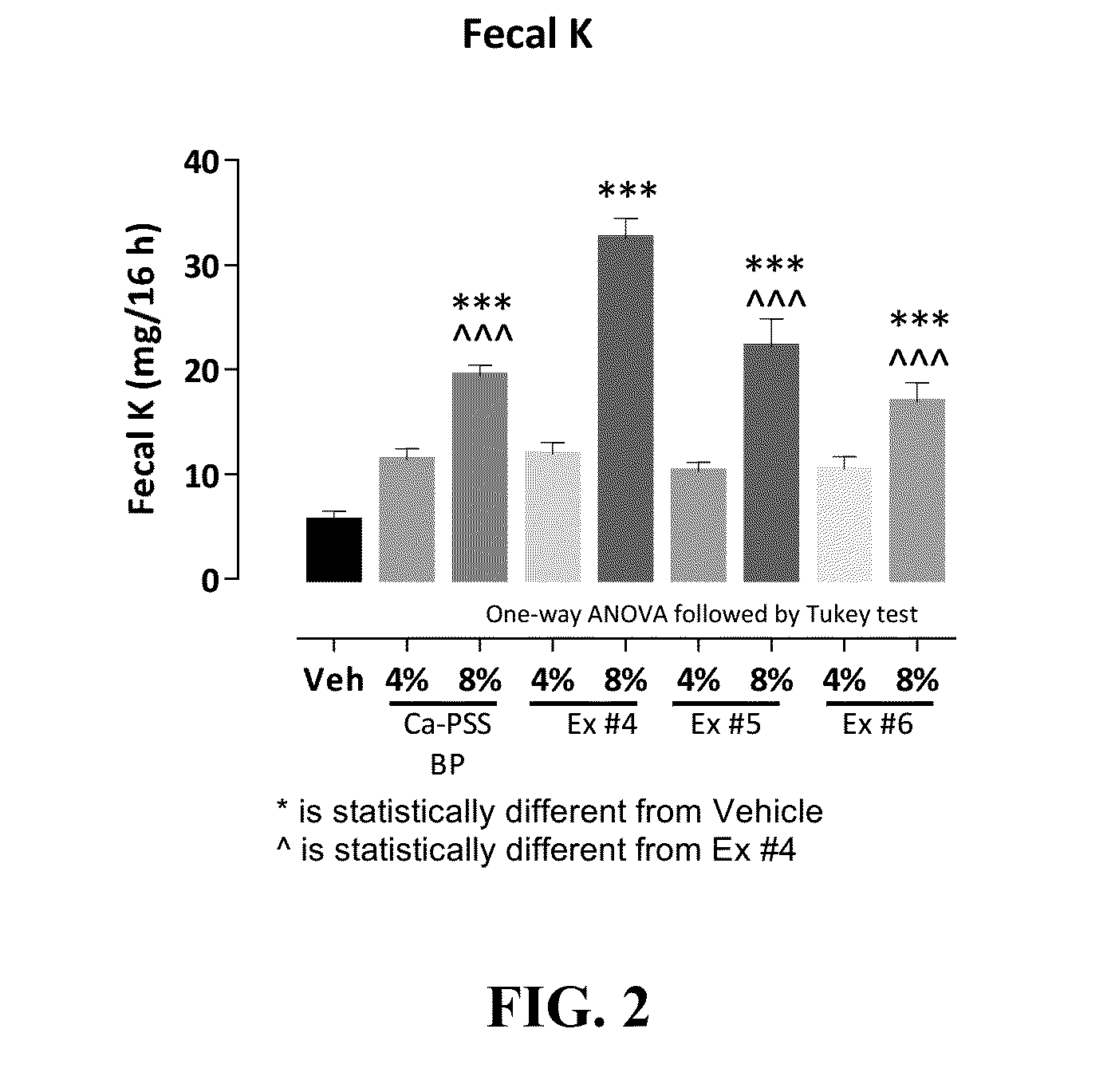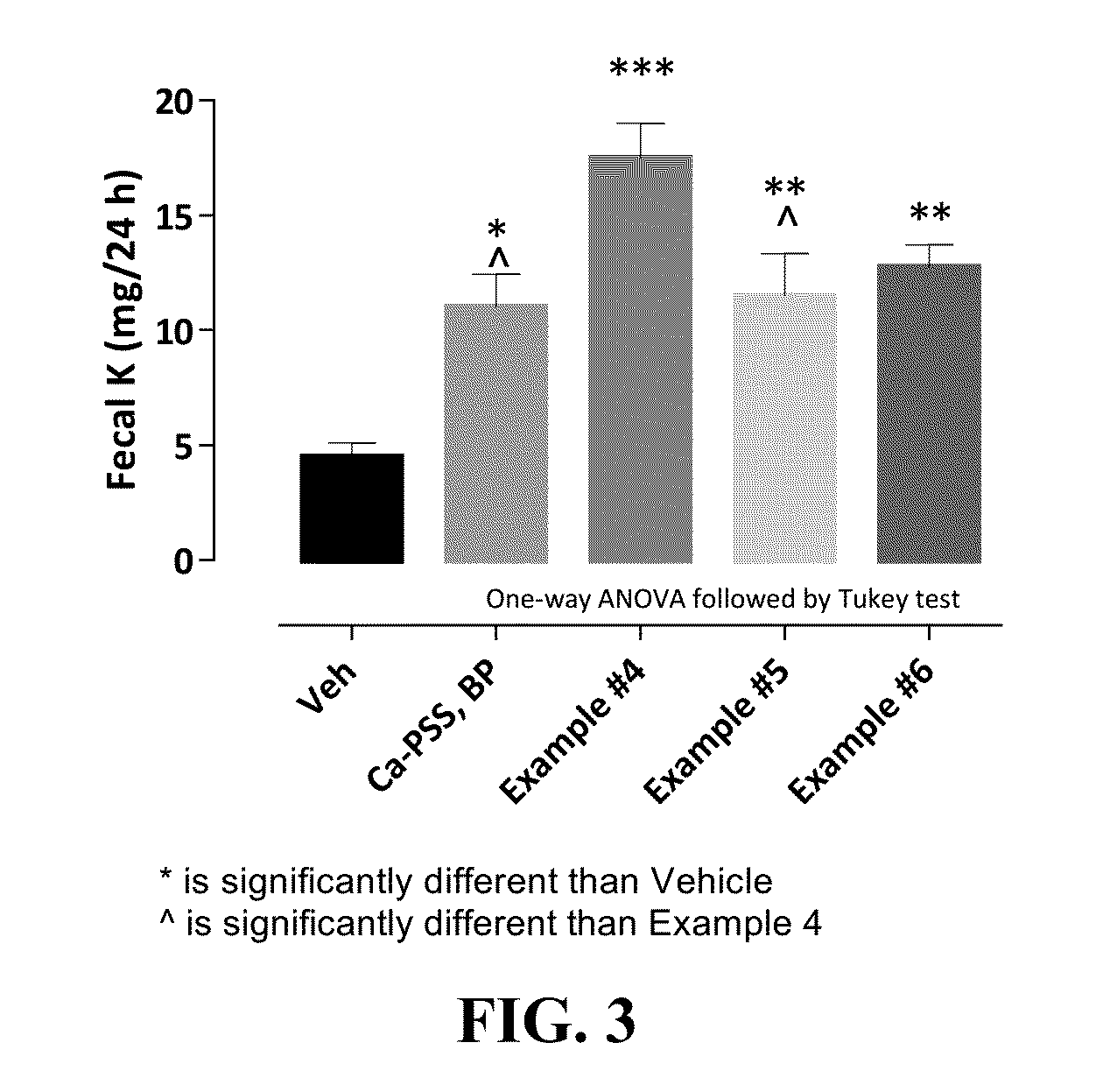Pharmaceutical compositions for treating hyperkalemia
- Summary
- Abstract
- Description
- Claims
- Application Information
AI Technical Summary
Benefits of technology
Problems solved by technology
Method used
Image
Examples
example 1
Preparation of Calcium Polystyrene Sulfonate (Ca-PSS) with 8% DVB, 200-400 Mesh Size
[0442]Crosslinked (8%) Polystyrene sulfonate beads (200-400 mesh size) in the acid form (H+) were obtained from Sigma-Adrich (Catalog #217514). The beads (100 g, wet weight) were suspended in aqueous NaOH (1M, 300 mL) and shaken for 20 hours at 27° C., then the mixture was filtered, and the wet beads washed with water (2×300 mL). The beads were suspended in aqueous CaCl2 (0.5M, 700 mL) and shaken for 2 days at 37° C. The beads were then filtered, and suspended in fresh CaCl2 (0.5M, 700 mL), and shaken for 2 days at 37° C. The beads were then filtered, washed successively with water (3×400 mL), and dried under reduced pressure to give 56.9 g of Example 1 as a fine light brown sand. Approximate particle size range of 30-120 μm determined by digital visual microscopy.
example 2
Preparation of Calcium Polystyrene Sulfonate (Ca-PSS) with 4% DVB, 200-400 Mesh Size
[0443]Example 2 was prepared from 100 g crosslinked (4%) polystyrene sulfonate beads (200-400 mesh), H+ form, obtained from Sigma-Adrich (Catalog #217484) using the procedures described in Example 1 to give 37.1 g of Example 2 as a fine light brown powder. Approximate particle size range of 30-130 μm determined by digital visual microscopy.
example 3
Preparation of Calcium Polystyrene Sulfonate (Ca-PSS) with 2% DVB, 200-400 Mesh Size
[0444]Example 3 was prepared from 100 g crosslinked (2%) polystyrene sulfonate beads (200-400 mesh), H+ form, obtained from Sigma-Aldrich (Catalog #217476) using the procedures described in Example 1 to give 21.8 g of Example 3 as a light brown sand: Particle size: dv(0.1)=90 μm; dv(0.5)=120 μm; dv(0.9)=170 μm.
PUM
| Property | Measurement | Unit |
|---|---|---|
| Fraction | aaaaa | aaaaa |
| Fraction | aaaaa | aaaaa |
| Fraction | aaaaa | aaaaa |
Abstract
Description
Claims
Application Information
 Login to View More
Login to View More - R&D
- Intellectual Property
- Life Sciences
- Materials
- Tech Scout
- Unparalleled Data Quality
- Higher Quality Content
- 60% Fewer Hallucinations
Browse by: Latest US Patents, China's latest patents, Technical Efficacy Thesaurus, Application Domain, Technology Topic, Popular Technical Reports.
© 2025 PatSnap. All rights reserved.Legal|Privacy policy|Modern Slavery Act Transparency Statement|Sitemap|About US| Contact US: help@patsnap.com



